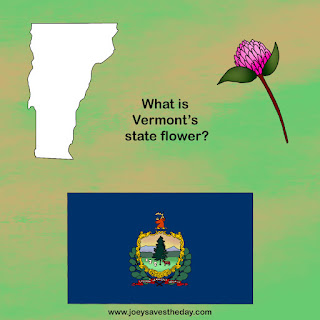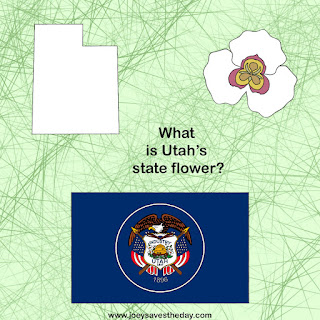Last week, we posted facts about Utah. Get ready to dive into the charming world of Vermont! This week, we’re excited to share some fascinating facts about the Green Mountain State. Discover the meaning behind Vermont's state flag, meet its delightful state bird, and explore many more fun tidbits that showcase what makes Vermont so special.
Did you know that Vermont was the fourteenth state to join the United States? That’s right! Vermont officially became part of the union on March 4, 1791, a pivotal moment in the nation's history that contributed to its westward expansion and growth.
Geographically, Vermont is situated in the Northeastern region of the country and is known for its picturesque landscapes, including rolling hills, lush forests, and charming small towns. The state is bordered by three states: New Hampshire to the east, Massachusetts to the south, and New York to the west. Additionally, Vermont shares a northern border with Canada, which has played a significant role in shaping its cultural and historical identity through trade and interactions over the years.
Vermont is the forty-fifth largest state in the United States by area, making it one of the smaller states in the country. Despite its size, it boasts a rich cultural heritage, vibrant communities, and a strong sense of local pride. According to the latest estimates, Vermont has a population of approximately 647,063 residents, fostering a close-knit community atmosphere that emphasizes outdoor activities, local agriculture, and a commitment to environmental sustainability. The state's unique combination of natural beauty, cultural diversity, and historical significance makes it a fascinating place to explore and appreciate.
Vermont famous person alert:
Did you know that Damon Kyle Wayans Jr. was born in the charming town of Huntington, Vermont? He is not only an accomplished American actor but also a talented comedian and writer. Damon comes from a notable family in the entertainment industry, being the son of prominent comedian Damon Wayans. Over the years, he has established a reputation for himself through various television shows and films, showcasing his distinctive comedic style and acting abilities. His work often reflects a blend of humor and relatability, resonating with a wide audience.
To learn more about Damon Kyle Wayans Jr, CLICK HERE
Be sure to get your parent/caretaker’s permission before clicking on any links.
Facts about Vermont:
1. Vermont is a state that boasts a variety of distinctive features that contribute to its charm and appeal. One of its most famous products is maple syrup, renowned for its rich flavor and produced in abundant quantities during the sugaring season in early spring. The state is also celebrated for its stunning natural landscapes, characterized by sprawling forests that transform into a vibrant tapestry of colors in the fall. For outdoor enthusiasts, Vermont is home to several world-class skiing resorts, such as Stowe and Killington, which attract visitors from far and wide during the winter months.
Interestingly, Vermont holds the distinction of having just one official state nickname: the Green Mountain State. This nickname references its mountainous terrain and lush greenery, which are defining features of the landscape. The state motto, “Freedom and Unity,” has deep historical significance and was adopted in 1788, reflecting the values of the state and its people. Additionally, Vermont's postal abbreviation is VT, which is commonly used in various contexts, including mailing and logistics. The state's unique blend of natural beauty, rich history, and cultural heritage truly makes Vermont a standout in the northeastern United States.
2. Montpelier, the capital city of Vermont, holds a unique distinction as the smallest state capital in the United States. Officially designated as the capital in 1805, Montpelier serves as the political and administrative center of the state. Despite its modest size, with an estimated population of around 8,000 residents, the city is rich in history and charm. Nestled in the picturesque Green Mountain State, Montpelier is characterized by its historic buildings, vibrant local culture, and scenic landscapes, making it a notable hub for both residents and visitors alike.
3. The official state bird of Vermont is the Hermit Thrush (Catharus guttatus), a charming small bird renowned for its melodic song. The Hermit thrush features a predominantly brown plumage that blends seamlessly with its natural surroundings, showcasing subtle variations in tones. Its chest is adorned with delicate brown and white spots, while its tail exhibits a slightly reddish hue, adding to its distinctive appearance. This bird typically inhabits dense woodlands and is often found foraging on the forest floor for insects and berries. The Hermit Thrush was designated as Vermont’s state bird on June 1, 1941, reflecting the state's appreciation for its natural beauty and the bird's association with the serene wilderness of the Green Mountain State. The hauntingly beautiful calls of the Hermit thrush resonate through Vermont's forests, especially during the spring and summer months, making it a beloved symbol of the region's rich wildlife heritage.
You can look at a picture and read more about the Hermit thrush here: Click here
Hey there! Just a friendly reminder: please ensure you have your parent or caretaker's permission before clicking on any links. It's always a good idea to stay safe online!
4. The red clover, scientifically known as Trifolium pratense, is the official state flower of Vermont. This perennial herbaceous plant thrives in diverse environments across the state, particularly in meadows, pastures, and grassy areas. The red clover typically blooms in May and June, showcasing its striking flower heads that display an appealing pinkish-red to purple hue. Known for its lush green foliage and vibrant blossoms, the red clover not only adds beauty to the landscape but also plays a significant role in local ecosystems by attracting pollinators such as bees. In recognition of its significance, the red clover was designated as Vermont's official state flower in February 1895, symbolizing the state's rich agricultural heritage and natural beauty.
5. The present state flag of Vermont was officially adopted on June 1, 1923. This flag features a vibrant blue background, symbolizing the state's values and natural beauty. At its center, the flag features the state seal of Vermont, adorned with various elements that represent the state's rich history and agricultural heritage. The seal features imagery such as a pine tree, which symbolizes Vermont's forestry industry, and agricultural symbols that highlight the region's importance in farming. Overall, the design of Vermont's state flag encapsulates the spirit and identity of the Green Mountain State.
6. Vermont’s agricultural landscape is a tapestry of color and flavor, showcasing a diverse range of crops that thrive in the region's rich soil and temperate climate. In the orchards, you'll find rows of apple trees bursting with crisp, juicy fruits that come in many varieties, perfect for fresh eating or baking into delicious pies. Nearby, cherry trees offer their sweet and tart gems, ideal for jams and desserts, attracting both locals and visitors alike during harvest time.
As the holiday season approaches, Vermont becomes a picturesque scene with its evergreen Christmas trees standing tall and proud, ready for families to take home and decorate. In the fields, the earth is dotted with the vibrant yellow blooms of sunflowers, not only a feast for the eyes but also a crucial habitat for pollinators.
Moreover, sweet potatoes thrive in the warm summer months, with their elongated and earthy texture, adding a nutritional punch to any meal. And let’s not forget the zucchini, a summer garden staple, which can be grilled, sautéed, or baked into delightful breads. Together, these crops reflect the diversity of Vermont’s agricultural heritage, each contributing to the state's local food culture and economy.
7. Vermont offers some truly unique destinations that are worth exploring. One intriguing spot is the Forgotten Village at Greenbank's Hollow, a charming and historic site that transports visitors back in time with its picturesque landscapes and remnants of a once-thriving community. Another fascinating attraction is the Rock of Ages Granite Quarry, where you can witness the impressive scale of granite production and learn about the artistry involved in quarrying this magnificent stone. Finally, don’t miss the Vermont Teddy Bear Company, where you can watch skilled craftsmen create high-quality, lovable teddy bears and even design your own custom bear to take home as a cherished memento. Each of these locations provides a glimpse into the rich culture and natural beauty of Vermont.
8. Vermont is home to a diverse range of wildlife, including several fascinating animals. Among them are the majestic black bears, known for their strength and adaptability in the forested regions. Beavers can be found industriously building dams in streams and rivers, showcasing their remarkable engineering skills. Chipmunks are a common sight, scurrying about and storing food for the winter months. Rabbits, with their twitching noses and fluffy tails, thrive in the meadows and woodlands. The elusive long-tailed weasel, with its sleek body and sharp agility, hunts small rodents and birds. In the vast, open spaces, moose roam majestically, often seen grazing in wetlands. Finally, the graceful white-tailed deer can be spotted in fields and undergrowth, known for their distinctive tails that lift as they flee from danger. Together, these animals contribute to Vermont's rich and vibrant natural ecosystem.
9. Did you know that Vermont can experience very hot or very cold weather depending on the time of year? The highest temperature recorded in Vermont was 105 degrees Fahrenheit in St. Johnsbury on July 4, 1911. That's as hot as a summer day in the desert! On the other hand, the coldest temperature recorded in Vermont was -50 degrees Fahrenheit in Bloomfield on December 30, 1933. That's as cold as the North Pole! Can you imagine what it would be like to experience such extreme temperatures?
Get your free printable Vermont worksheet here:
Check out my printable section for a wide variety of worksheets and coloring sheets!
Let’s explore Vermont!
Vermont is famous for its maple syrup and beautiful fall leaves!
Activity Steps:
1. Cut out maple leaf shapes from colored paper.
2. On each leaf, write something you’re thankful for.
3. Tape or glue the leaves to a tree drawing or string them into a garland.
4. Add acorns, squirrels, or cozy fall decorations.
Reflection:
What’s one thing that makes your heart feel warm and thankful?
Books about Vermont:
1. Champ and Me by The Maple Tree by Ed Shankman
2. My United States: Vermont by Jennifer Hackett
3. Good Night Vermont by Michael Tougias
4. I Saw Santa in Vermont by JD Green
Parents and caregivers, please ensure that the books you read to your child or children are appropriate for their age and friendly for children.
You can Click here to purchase the 50 States workbook on Amazon.
You can also use the '50 States Hub' tab at the top of my page to find all the posts from all 50 states in one convenient location.
Tune in next week to learn some facts about Virginia!

















